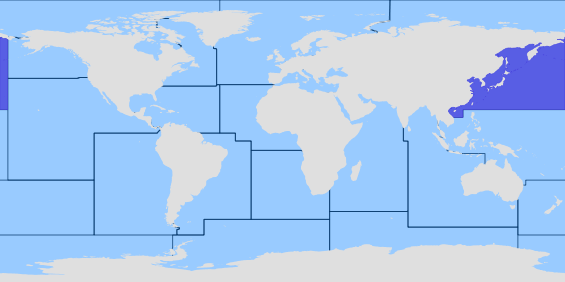angličtinaThe carapace has the median teeth before the crevical groove blunt and inconspicuous: the rostral tooth is reduced to a tubercle, the pregastric tooth is replaced by a double row of 1 or 2 tubercles and a few inconspicuous median tubercles. The gastric tooth is the most conspicuous, it isbroad and blunt and bears a double row of tubercles. The surface of the carapace is very uneven and the tubercles are high. Between the postrostral and branchial carinae there are a few tubercles and many smooth areas. The abdomen shows a distinct median longitudinal carina on somites 2 to 5, that of somite 3 is by far the highest, and (like the one fo somite 4) bears numerous tubercles laterally. Somite 1 is quite smooth, and has the transverse groove only slightly noticeable in the extreme lateral parts. The exposed part of the following somites show no arborescent pattern, but in each somite there is a wide transverse groove there. In somite 2, both before and behind this groove there is a perfectly smooth broad ridge, a character in which the species differs from most others. In the following somites these ridges are tuberculate. In somites 4 to 6 the posterior margin is tuberculate. The fourth antennal segment has a sharp and high oblique median carina. Outside the carina the upper surface of the segment shows a row of tubercles. The outer margin of the segment bears 4 or 5 teeth (apical tooth of the segment not included), the inner margin has 5 to 7 teeth of irregular size. The anterior margin of the thoracic sternum is deeply U-shapedly incised. Each of the thoracic sternites bears a rounded median tubercle. The dactyli of pereiopods 3 to 5 show two short fringes of hair each. Colour: the dorsal surface of the body is greyish or purplish brown with darker spots. The distal segment of the antenna is often lighter. The first abdominal somite shows dorsally often a dark blue colour (Ref. 252).
Zobraziť preklad
Preložené z angličtiny od BING
Tento preklad je iba orientačný: kvôli nedostatočnej kvalite zdrojového textu sú morfologické deskriptory dostupné iba v angličtine v BETA verzii systému. Viacjazyčné informácie budú dostupné v budúcich verziách.
slovenčinaPanciera má strednú zuby pred crevical drážky tupé a nenápadný: rostrální zub je znížená na nádor, pregastric zub nahrádza dvojradové 1 alebo 2 nádory a pár nenápadné medián nádory. Žalúdočné zub je najvýraznejšia, to isbroad a tupý a nesie dvojradové nádory. Je veľmi nerovnomerný povrch panciera a nádory sú vysoké. Medzi postrostral a žiabrové carinae existuje niekoľko nádory a mnoho hladké plochy. Brucha sa zobrazuje odlišné strednou pozdĺžnou kýl somites 2 až 5, že somite 3 je zďaleka najvyšší a (ako jedna fo somite 4) nesie početné nádory priečne. Somite 1 je pomerne hladký a má len mierne nápadné priečne drážky v extrémne bočné časti. Exponované časti týchto somites Zobraziť žiadne arborescent vzor, ale v každom somite je široké priečne drážky tam. V somite 2 pred a za tejto drážke je dokonale hladká široký hrebeň, znak, v ktorom druh odlišuje od väčšiny ostatných. Tieto hrebene sú tieto somites tuberculate. V somites 4 až 6 zadný okraj je tuberculate. Štvrtý antennal segment má ostré a vysoké šikmé medián kýl. Mimo carina Horný povrch segmentu ukazuje riadok nádory. Vonkajšieho okraja segmentu nesie 4 alebo 5 zubov (apikálnej zub segmentu nezahrnuté), vnútorný okraj má 5 až 7 zuby nepravidelné veľkosti. Predný okraj hrudnej hrudnej kosti je hlboko U-shapedly narezať. Každý z hrudnej sternites nesie zaoblené medián nádoru. Dactyli pereiopods 3 až 5 ukazujú dve krátke strapcami vlasy každý. Farba: Chrbtová povrch tela je sivasto alebo purpurovo hnedá s tmavšie škvrny. Distálnej časť antény je často ľahšie. Prvý brušnej somite ukazuje dorzálnej často tmavo modrá farba (Ref. 252).
 Obrázok nie je k dispozícii
Obrázok nie je k dispozícii


